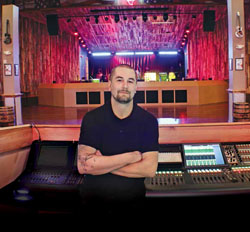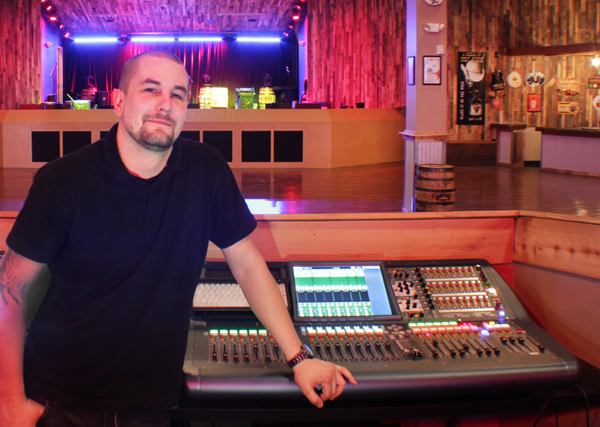
A couple of years ago, the decision was made to switch to Midas PRO2 consoles for live mixing, capable of handling house and monitor duties for all but the largest shows where a dedicated monitor console might be brought in.
“The main reason is that the PRO2 is 96 kHz, and we want to pass 96 kHz signal all the way through to the controllers,” Maichele says. “Further, all of the outputs of this console are time aligned, and we’ve noticed that especially with country music, we’re getting a very tight, very clear and punchy sound from it.”
In his view, the console previously had a steeper-than-desired learning curve, but that’s been rectified with firmware updates. “They’ve made the console more intuitive to operate and smoothed out some glitches, and Midas is always an easy sell in terms of riders. There’s not a tour or engineer that objects.”
Signal remains at 96 kHz from the time it’s sent from a Midas DL251 digital I/O box at the stage via Cat-5 to the console and then again in AES (again via Cat-5) to the London and LA amplified controllers. Several drop snakes on stage provide added connectivity for bands.
Further Amenities
The house mix position is at a different location in every venue, and typically, it’s not ideal with respect to the main system in deference to prime patron seating. This is mitigated somewhat by the similar voicing of all loudspeakers in the venue, with a further assist from a pair of 8XTi loudspeakers for monitoring when necessary.
It’s also a situation that makes the PRO2’s Mixtender iPad control app “priceless,” in Maichele’s view. The app allows the engineer to roam the venue, monitoring all input and output metering simultaneously in real time and providing simple, fast mix adjustment for both house and monitors.
Other than the console, FOH is devoid of gear save for a couple of Shure ULX-D digital wireless microphone system receivers and a CD player with aux input for house music. Artists can be supplied with a Yamaha SubKick as well as an Audix drum mic package, Shure wireless transmitters, and Shure SM58 and SM57 dynamic mics for any need. Larger locations also offer a Heil Sound mic package.
There’s been a switch in stage wedges underway to L-Acoustics 108P and 112P 2-way self-powered monitors and 115xt HiQ bi-amped active monitors in the larger venues, which Maichele cites for their low profile, solid output and “punch”—and again, rider friendliness. The change is indicative of a never-ending pursuit of constant improvement.
“We’ve attained a dramatic upgrade for systems,” he concludes. “For example, since we began implementing L-Acoustics more than two years ago, at seven locations and counting, we’ve not had a single component failure. Not one. That’s remarkable and sure says a lot. Further, the systems perform exceptionally at both the background level and in full concert mode. Still, we’re always looking for a better way to serve the patrons, artists and client. That won’t ever stop.”
Keith Clark is editor in chief of ProSoundWeb and Live Sound International.

